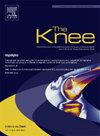Unveiling knee morphology with SHAP: shaping personalized medicine through explainable AI
IF 2
4区 医学
Q3 ORTHOPEDICS
引用次数: 0
Abstract
Purpose:
This study aims to enhance personalized medical assessments and the early detection of knee-related pathologies by examining the relationship between knee morphology and demographic factors such as age, gender, and body mass index. Additionally, gender-specific reference values for knee morphological features will be determined using explainable artificial intelligence (XAI).
Methods:
A retrospective analysis was conducted on the MRI data of 500 healthy knees aged 20–40 years. The study included various knee morphological features such as Distal Femoral Width (DFW), Lateral Femoral Condyler Width (LFCW), Intercondylar Femoral Width (IFW), Anterior Cruciate Ligament Width (ACLW), and Anterior Cruciate Ligament Length (ACLL). Machine learning models, including Decision Trees, Random Forests, Light Gradient Boosting, Multilayer Perceptron, and Support Vector Machines, were employed to predict gender based on these features. The SHapley Additive exPlanation was used to analyze feature importance.
Results:
The learning models demonstrated high classification performance, with 83.2% (±5.15) for classification of clusters based on morphological feature and 88.06% (±4.8) for gender classification. These results validated that the strong correlation between knee morphology and gender.
Conclusion:
The study found that DFW is the most significant feature for gender prediction, with values below 78–79 mm range indicating females and values above this range indicating males. LFCW, IFW, ACLW, and ACLL also showed significant gender-based differences. The findings establish gender-specific reference values for knee morphological features, highlighting the impact of gender on knee morphology. These reference values can improve the accuracy of diagnoses and treatment plans tailored to each gender, enhancing personalized medical care.

用SHAP揭示膝关节形态:通过可解释的人工智能塑造个性化医疗
目的:本研究旨在通过研究膝关节形态与年龄、性别和体重指数等人口统计学因素之间的关系,加强个性化的医学评估和膝关节相关疾病的早期发现。此外,将使用可解释的人工智能(XAI)确定膝关节形态特征的性别特定参考值。方法:对500例20 ~ 40岁健康膝关节的MRI资料进行回顾性分析。该研究包括各种膝关节形态特征,如股骨远端宽度(DFW)、股骨外侧髁宽度(LFCW)、股骨髁间宽度(IFW)、前交叉韧带宽度(ACLW)和前交叉韧带长度(ACLL)。机器学习模型,包括决策树、随机森林、光梯度增强、多层感知器和支持向量机,被用于基于这些特征预测性别。采用SHapley加性解释分析特征重要性。结果:基于形态特征的聚类分类准确率为83.2%(±5.15),基于性别的聚类分类准确率为88.06%(±4.8)。这些结果证实了膝关节形态与性别之间的强烈相关性。结论:研究发现DFW是预测性别最重要的特征,小于78-79 mm为女性,大于该范围为男性。LFCW、IFW、ACLW和ACLL也存在显著的性别差异。研究结果建立了膝关节形态特征的性别特异性参考值,强调了性别对膝关节形态的影响。这些参考值可以提高针对每个性别的诊断和治疗方案的准确性,增强个性化医疗服务。
本文章由计算机程序翻译,如有差异,请以英文原文为准。
求助全文
约1分钟内获得全文
求助全文
来源期刊

Knee
医学-外科
CiteScore
3.80
自引率
5.30%
发文量
171
审稿时长
6 months
期刊介绍:
The Knee is an international journal publishing studies on the clinical treatment and fundamental biomechanical characteristics of this joint. The aim of the journal is to provide a vehicle relevant to surgeons, biomedical engineers, imaging specialists, materials scientists, rehabilitation personnel and all those with an interest in the knee.
The topics covered include, but are not limited to:
• Anatomy, physiology, morphology and biochemistry;
• Biomechanical studies;
• Advances in the development of prosthetic, orthotic and augmentation devices;
• Imaging and diagnostic techniques;
• Pathology;
• Trauma;
• Surgery;
• Rehabilitation.
 求助内容:
求助内容: 应助结果提醒方式:
应助结果提醒方式:


